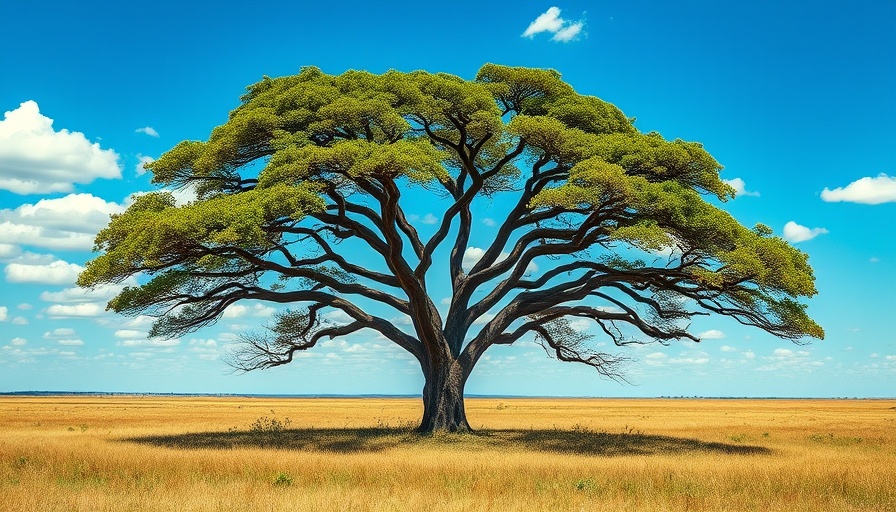
Understanding the Cerrado: A Unique Savanna Ecosystem
The Cerrado, often referred to as the world’s most diverse savanna, is a vast region of Brazil known for its incredible plant diversity, encompassing over 1,600 tree species. However, a recent study conducted by researchers from Brazil, the Netherlands, and the UK reveals a startling pattern of hyperdominance—just 30 species dominate nearly half of the trees in this expansive biome. This phenomenon is critical as it shapes our understanding of biodiversity within the Cerrado.
What is Hyperdominance and Why Does it Matter?
Hyperdominance refers to the unequal distribution of species in an ecosystem, where a small number of species account for a large proportion of the total biomass. In the case of the Cerrado, Qualea parviflora accounts for an astonishing one in every fourteen trees. This concentration raises alarm bells about the ecosystem’s vulnerability to disruptions. If significant environmental changes occur—such as climate change, deforestation, or land development—the stability of the savanna could be jeopardized, potentially leading to significant ecological repercussions.
The Hidden Costs of Deforestation
Since 1985, the Cerrado has lost approximately 24 billion trees. This alarming statistic highlights the severe threat posed by human activities, such as agriculture and urbanization, which not only reduce tree populations but also threaten the adaptive capacity of the remaining species. As a result, it is vital to focus research and conservation efforts on these hyperdominant species to preserve the ecosystem's functionality. Without intervention, we might witness irreversible damage to the cerrado's rich biodiversity.
Implications for Climate and Community
The Cerrado is not just significant for its biodiversity but also plays a crucial role in the health of our planet. As a major carbon sink, its preservation is key to combating climate change. The savanna serves as a vital water source, affecting both local communities and global weather patterns. Thus, understanding the dynamics of these 30 tree species can provide insights into how best to manage and conserve the remaining ecology, ensuring that this vital source of resources and beauty endures for future generations.
Opportunities for Sustainable Development
For homebuyers, sellers, and property investors, the relationship between the Cerrado and sustainable development is significant. By advocating for eco-friendly practices and conservation of this unique ecosystem, individuals can contribute to the health of the environment while making informed investments. Sustainable land use not only benefits local biodiversity but can enhance property values in the long run as the demand for environmentally responsible living spaces continues to grow.
Taking Action for a Sustainable Future
The findings of this study shed light on the urgent need for cohesive action in protecting the Cerrado. As concerned citizens, homeowners, and investors, we can support policies and initiatives that promote reforestation and sustainable land management practices. Moreover, advocating for the responsible development of land that respects natural ecosystems will secure our environmental future.
As we reflect on the interconnectedness of our actions and the ecosystems we inhabit, consider how you can make a difference in your community through sustainable practices. For instance, when purchasing or developing property in the Dumfries market, prioritize projects that harmonize with nature—this could be via the planting of native species or sustainable landscaping. Every small step contributes to the preservation of vital ecosystems like the Cerrado.
 Add Row
Add Row  Add
Add 





 Add Row
Add Row  Add
Add 








Write A Comment